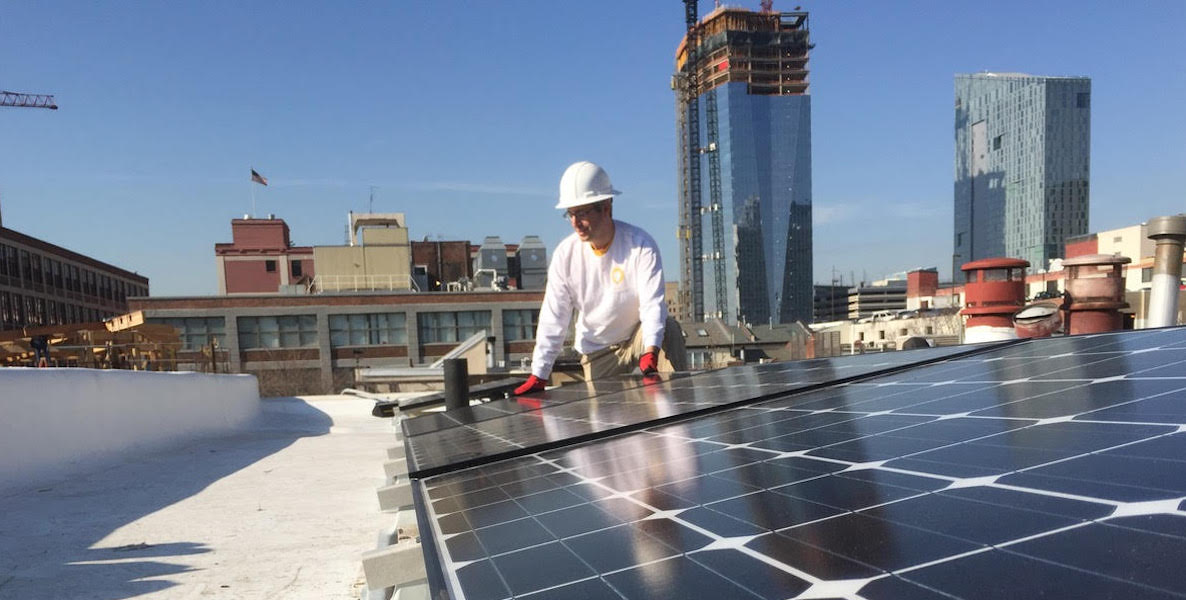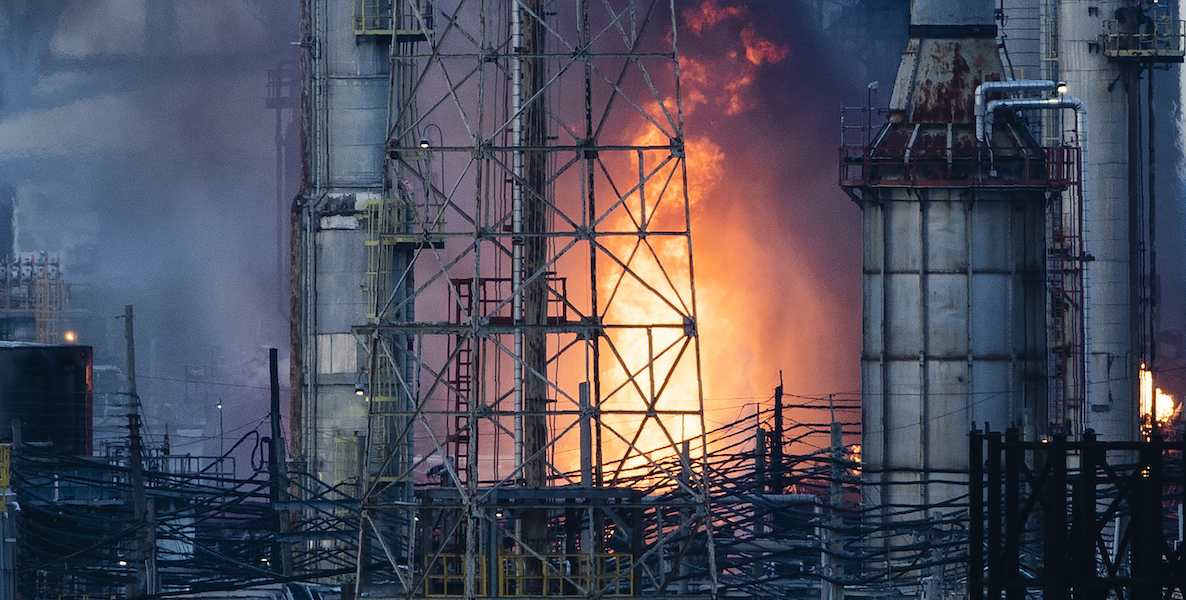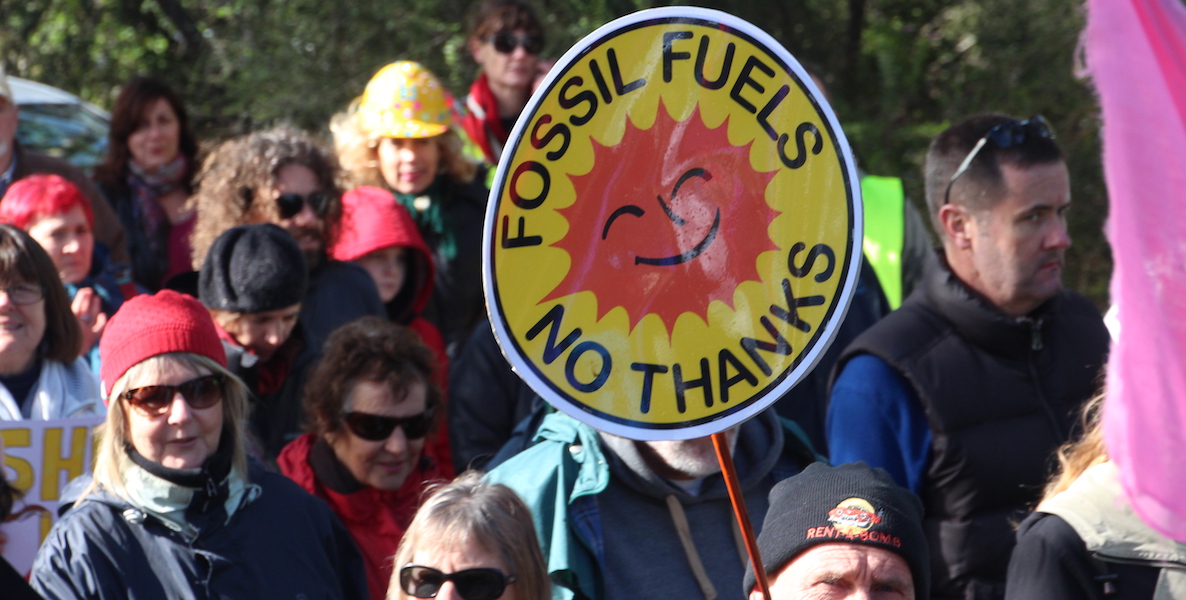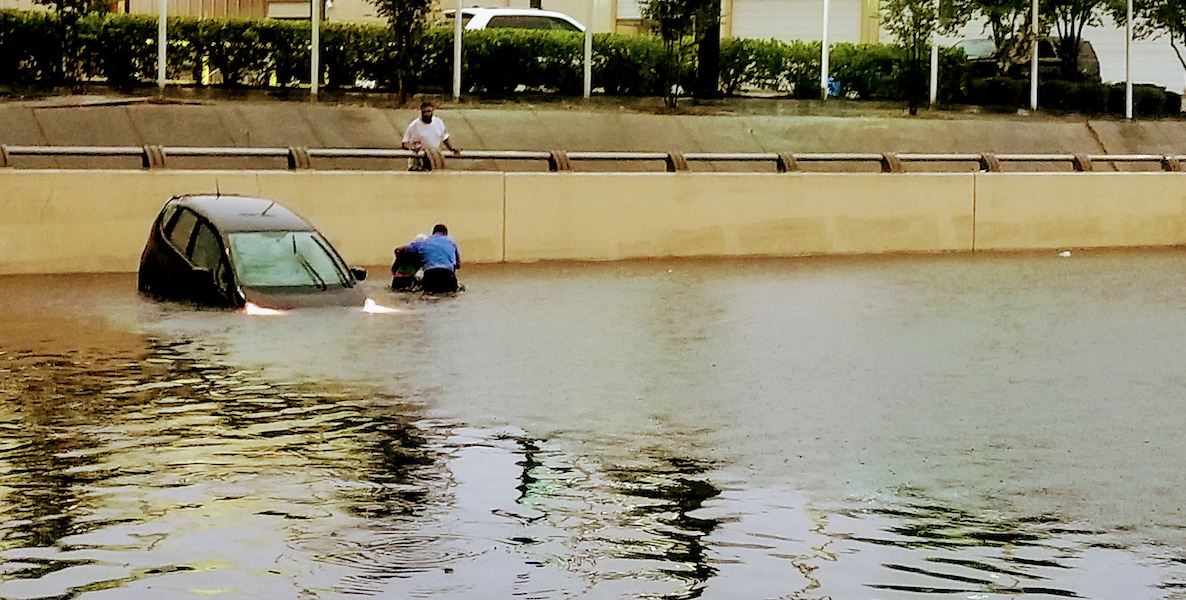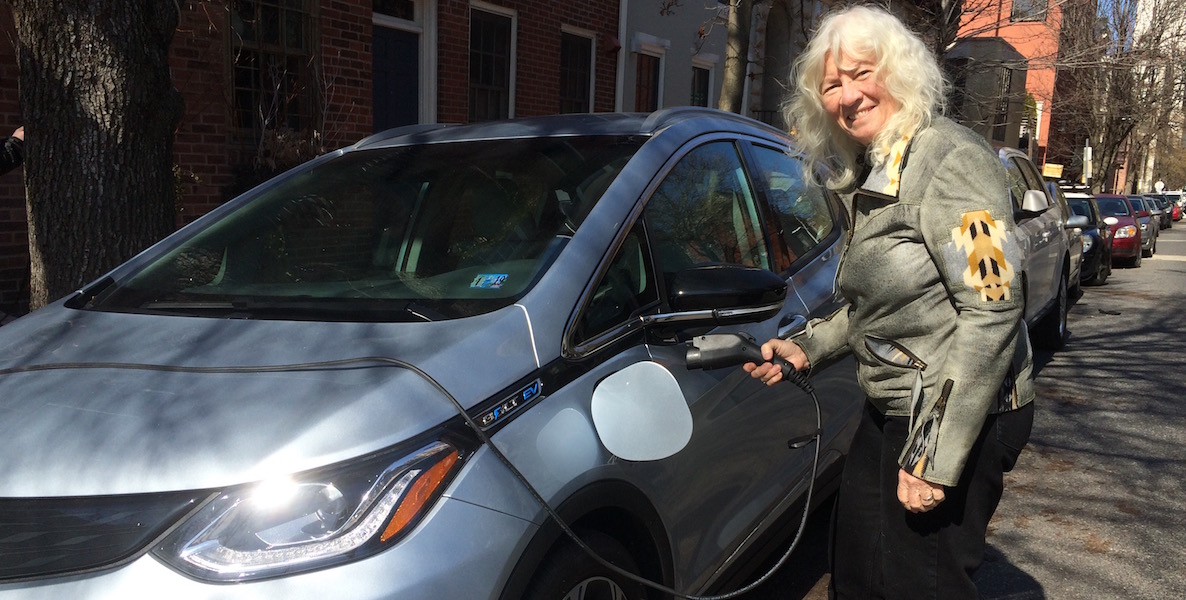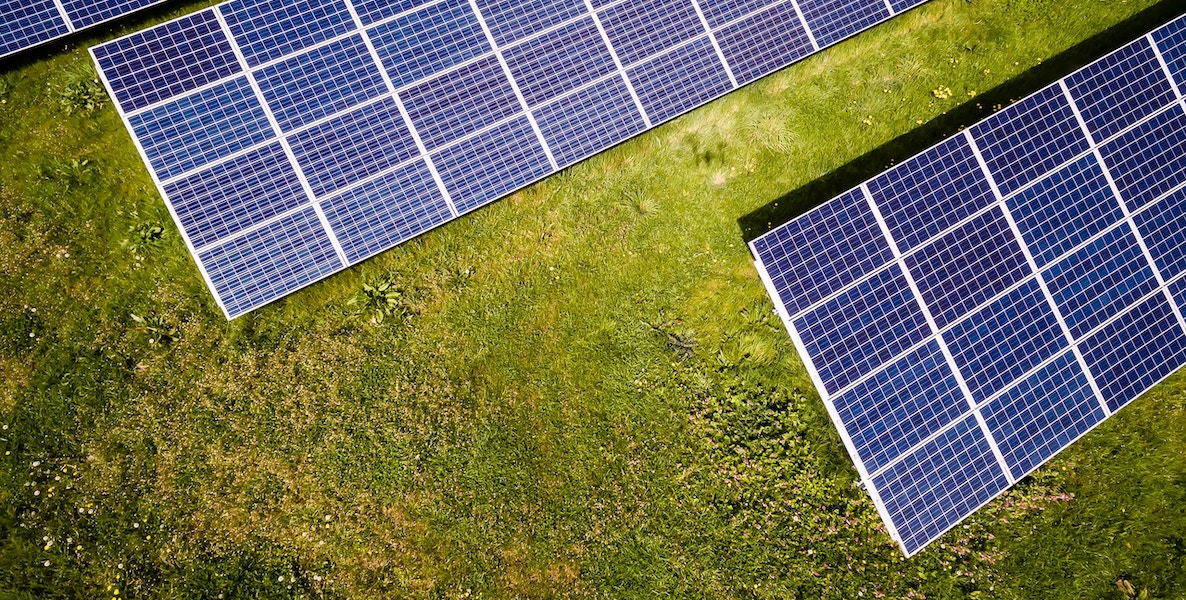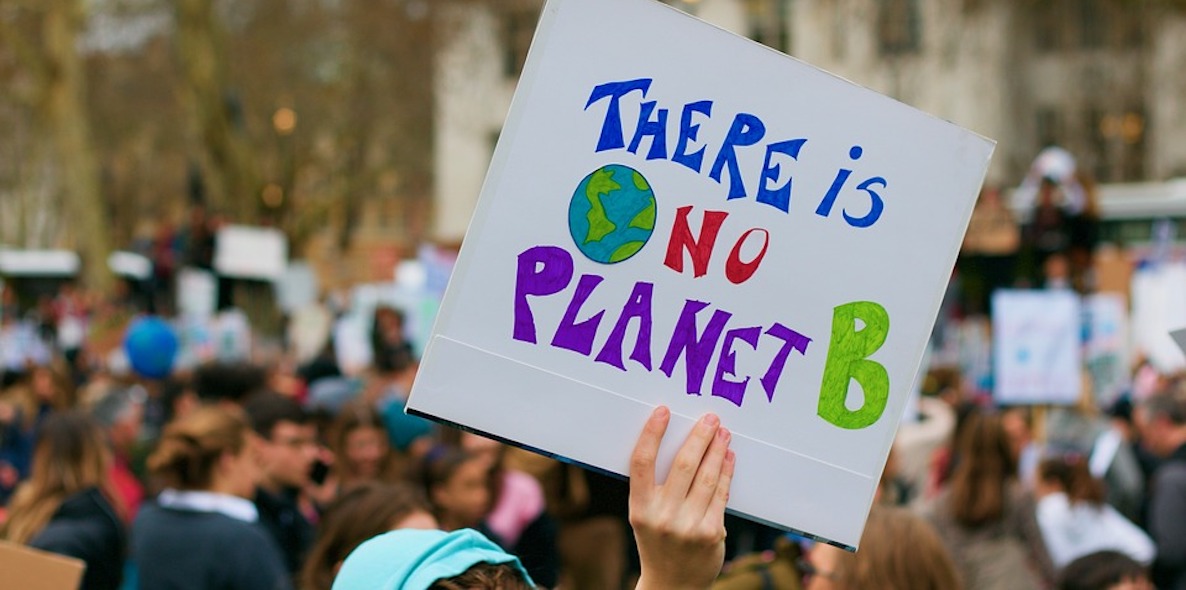East Parkside, a neighborhood in West Philadelphia, is tucked between the Philadelphia Zoo and the Please Touch Museum, with Fairmount Park nestled along its northern border. But despite its proximity to these popular attractions, East Parkside is economically neglected. It has a poverty rate of 36 percent, as well as an abundance of vacant, blighted land.

Prefer the audio version of this story? Listen to this article in CitizenCast below:
Audio Player
Call your repDo Something
Community solar is a clean energy model popping up around the country, as a means to make solar energy more accessible to people unable to install panels on their roofs. Instead, the panels operate on land in the community and ownership is shared by multiple subscribers, who receive a credit on their energy bills.
Under its own unique vision, CPCDC would own and operate solar panels in East Parkside, potentially in unused parts of Fairmount Park, which would generate clean energy for the city’s electrical grid—energy that would otherwise come from carbon-emitting fossil fuels. Neighbors would buy subscriptions to these solar energy panels and PECO, as the local energy utility, would reward them with credits, saving residents money. Simultaneously, CPCDC would sell its excess solar energy to nearby institutions, creating a new revenue stream for projects that would revitalize East Parkside.
“Civic engagement and education are essential,” Greenberg says. “We have to be in communities with the resources to engage people. And these are the people who will be the voters and will show up at the hearings and be the public pressure for doing what’s right.”
The neighborhood benefits from investment in its local economy and more money in residents’ pockets. The environment benefits from a new source of clean energy, which is crucial to mitigating the global climate crisis. And institutions benefit by advancing their sustainability and community outreach missions. It’s a win-win-win.
But as of now, it’s also a non-starter.
Chris Spahr, executive director of CPCDC, said that despite funding and support, the community solar plan has ground to a halt due to legislative red tape: Pennsylvania law dictates that multiple residents cannot own one solar array at a time.
“It would make this process a lot easier if we had more progressive public policy around solar energy,” Spahr says. “So we are advocating for that and we do see a change coming in the not-so-distant future. But until that it’s going to be a grind.”
In February, a bipartisan group of four Pennsylvania lawmakers—including Rep. Donna Bullock, who represents much of West Philadelphia—introduced Bill 531 to the House of Representatives that would clear the way for community solar projects in the state.
It shouldn’t be too much of a stretch—other nearby states, like Maryland, Delaware, New York and New Jersey currently have community solar policies in place. But eight months later, the bill is pending in the House Consumer Affairs Committee, where it could die if the committee decides not to hold a vote.
About going solar in PhillyLearn More
In other parts of the country, successful community solar projects are already underway. Mill Street Solar Project in Gardner, Massachusetts, for example, is a shared solar energy system that operates on the remediated site of a long-abandoned furniture manufacturing plant. The state’s virtual net metering policy allows the facility to produce electricity that offsets 80 percent of the power needs of a nearby assisted living facility, an affordable housing development, a family-owned hardware store and a non-profit serving those with disabilities.
Colorado—the first state in the country to pass community solar legislation in 2010—is also home to a project headed by developer Clean Energy Collective and the Denver Housing Authority (DHA) that devotes a portion of the power from three solar facilities to offsetting the electric bills of 35 families in DHA housing.
In New Jersey, the community solar pilot program is one of many means to achieving Gov. Phil Murphy’s goal to transition the state to 100 percent renewable energy by 2050, which he set in an executive order in May 2018. New Jersey is making appropriately bold moves toward clean energy in the face of the climate crisis. While fellow Governor Wolf would have you believe he’s leading similar efforts in the Keystone State, the legislative roadblock to community solar is just one of many examples of how Pennsylvania is lagging behind.
In January, Gov. Wolf signed his own executive order to cut greenhouse gas emissions 26 percent by 2025 compared to 2005 levels, with a longer-term target of an 80 percent reduction by 2050—a goal noticeably less ambitious than Gov. Murphy’s. And earlier this month, Gov. Wolf signed an executive order instructing that Pennsylvania join the Regional Greenhouse Gas Initiative (RGGI), a collaborative, market-based program meant to curb carbon emissions from the New England and mid-Atlantic’s electricity sector.
It’s a step forward—but one taken a decade after the nine other states in the initiative, which joined upon the program’s founding in 2009. And unlike community solar policy, it doesn’t specifically prioritize low-income communities of color, which face the worst consequences of climate change, from air pollution to disproportionately high heat.
“We’re really standing for community-driven, inclusive solutions that prioritize racial and economic justice, not simply technical fixes for carbon,” says Rabbi Julie Greenberg, the climate justice coordinator for faith-based advocacy group Pennsylvanians Organized to Witness Empower and Rebuild (POWER), “We don’t think those are real solutions because society will just regenerate the same problems we already have if it still has a stratified and extractive economy.”
In January, Gov. Wolf signed an executive order to cut greenhouse gas emissions 26 percent by 2025, with a longer-term target of an 80 percent reduction by 2050—a goal noticeably less ambitious than in New Jersey.
This may speak more to the reality of Pennsylvania politics than Wolf’s environmental bona fides. Any program that decreases the electricity sector’s demand for fossil fuels deals a blow to Pennsylvania’s natural gas and coal industries, which are some of the biggest in the country. Pennsylvania is second only to Texas in nationwide natural gas production. It’s third behind Wyoming and West Virginia in coal production.
As such, Wolf has toed the line when it comes to environmental regulations, attempting to establish himself as proactive on climate, while also acknowledging that in a state so heavily reliant on fossil fuels, the Republican-controlled legislature is unlikely to act on anything that seems to threaten the industry.
“What I try to make sure is that what I do is not too much, but not too little,” Wolf told reporters in January regarding his climate change policies.
While it isn’t surprising that Pennsylvania is stalling on passing progressive solar energy policy, that doesn’t make it any less frustrating to Spahr and his West Philly community. If executed and replicated, projects like the one in East Parkside could make the state a leader in lowering carbon emissions and mitigating climate change, the urgency of which can’t be overstated. Scientists estimate that we only have 11 years left to halve carbon emissions in order to have a 50 percent chance at limiting warming to moderate levels. Community solar could also help lift low-income households out of poverty, another much-needed effort, especially in Philadelphia, where the poverty rate still hovers around 25 percent.
The atmosphere seems ripe for solar, as it becomes increasingly popular and more cost effective. In the last decade, the cost to install solar has dropped by more than 70 percent and the solar industry has grown by 50 percent each year, according to the Solar Energy Industries Association.
“It would make this process a lot easier if we had more progressive public policy around solar energy,” Spahr says.
While community solar currently doesn’t have Harrisburg’s backing, CPCDC’s vision has attracted significant support—and funds—from elsewhere. Spahr is finishing up his tenure as a fellow at the Lindy Institute for Urban Innovation at Drexel University, which he joined in order to advance the project. CPCDC also received a Sunshine Grant from the U.S. Department of Energy, as well as funding from corporate donor Spark Therapeutics and the William Penn Foundation, to carry out solar initiatives. And POWER is financially backing CPCDC’s community engagement events, called Green Economy Chat n’ Chews, where neighbors are invited to eat together and talk about ways that East Parkside can grow its green economy, even beyond solar energy.
Spahr says that CPCDC is using the funds to try to advance solar energy in other ways, even if the community solar model in particular is put on hold. CPCDC is partnering with the Philadelphia Energy Authority (PEA) to increase education and recruitment in East Parkside around PEA’s Solarize Philly, a low-to-moderate income program under which families can lease rooftop solar panels and save 20 percent on their energy bills. However, Spahr says that progress on that program has also been slow, since underwriters require that homes have new roofs and other expensive features that many families can’t afford.
About clean energy issues in PhillyRead More
Greenberg says that House Bill 531 is unlikely to make it out of committee—unless Pennsylvanians speak up. To generate that grassroots advocacy, energy experts need to be informing and listening to the residents who would most benefit from community solar. While CPCDC is doing so, with its Green Economy Chat n’ Chews, she says other communities need to be following its lead, and on a much larger scale.
“Civic engagement and education are essential,” Greenberg says. “We can’t just have policy experts sitting around tables. We have to be in communities with the resources to engage people. And these are the people who will be the voters and will show up at the hearings and be the public pressure for doing what’s right.”
Related Stories:
- Solar States brings solar energy to houses and businesses throughout the region
- How West Laurel Hill Cemetery leads the country in environmental burial practices
- Philadelphia Zoo uses CropBox to grow food for animals—and fight local food deserts



